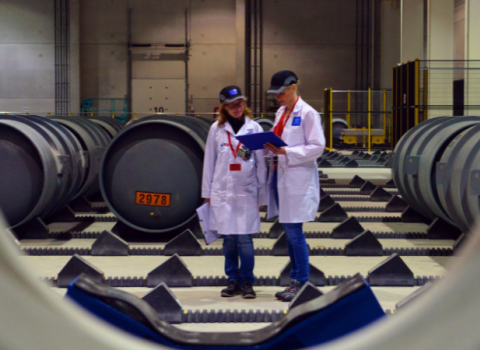Research lead
Researchers at Imperial College have announced an advance in the development of magnetic refrigeration technology that could provide a green alternative to traditional energy-hungry gas-compression fridges and air conditioners. Fridges based on the technology would require 20-30 per cent less energy to run than the best systems currently available, and would not generate ozone-depleting chemicals or greenhouse gases.
Magnetic refrigeration involves applying a magnetic field to a magnetic material, causing it to heat up. The excess heat is subsequently removed from the system by water, cooling the material back down to its original temperature. When the magnetic field is removed the material cools down even further, and it is this cooling property that researchers are looking to harness in cooling applications.
The technology has been proven in the lab and the researchers are looking for improved materials that provide highly efficient cooling at normal room temperatures. In a new study published last week the researchers show that the pattern of crystals (microstructure) inside different alloys, has a direct effect on how well they perform.
Lesley Cohen, from Imperial's Department of Physics, said the findings mean it should be possible to synthesise materials with the correct microstructure. “We found that the structure of crystals in different metals directly affects how dramatically they heat up and cool down when a magnetic field is applied and removed. [...] It means we may one day be able to tailor-make a material from the bottom up.”
Cohen said that whilst the majority of research to perfect magnetic refrigeration worldwide has tended to involve analysing and testing large samples of materials, the key to finding a suitable material for everyday applications may lie in the small detail, “Our research illustrates the importance of understanding the microstructure of these materials and how they respond to magnetic fields on a microscopic level.”





 A unique international forum for public research organisations and companies to connect their external engagement with strategic interests around their R&D system.
A unique international forum for public research organisations and companies to connect their external engagement with strategic interests around their R&D system.